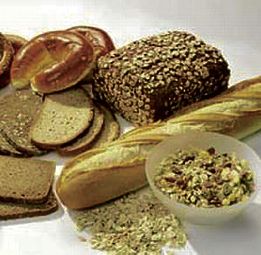JUST LIKE fitness and exercise, there are also diet and nutrition trends released yearly to answer current consumer needs, economic trends, and health conditions of the population. However, health professionals still go by the latest safe and effective nutrition recommendations backed up by studies, science and experience.
The United States Department of Agriculture (USDA) recently released the 2010 Dietary Guidelines regarding energy balance and weight management, nutrient adequacy, sodium consumption, and alcohol consumption that can be used as your guide to healthy living, so you won’t get confused by numerous fad diets and product gimmicks that promise quick weight loss and instant lifestyle change.
The following are the most basic and important areas to pay attention to, and which oftentimes confuse the general public.
Self-monitoring
Weight management for adults is more effective when there is consistent monitoring of body weight, food intake, and physical activities.
This guideline is consistent with studies about regular weigh-ins and consistent monitoring of food and exercise. You should be able to stay more conscious of nutrition content of various foods by reading nutrition labels, asking the calorie values of restaurant foods, and being more aware of calories that you burn with your physical activities.
These weight management efforts will effectively lead you to faster results, and will properly balance your food intake with your activities.
Fast-food consumption
Avoid fast-food restaurants, because studies show that eating fast-food once to twice per week is strongly associated with weight gain, overweight and obesity, especially among children.
You should limit access to fast foods, and make it a habit to prepare healthy meals at home while following the right portion size and nutrient content of foods based on your goals, weight, fitness level and food preference.
Television watching and eating
Children and adults should limit screen time to one to two hours a day, and avoid eating while watching.
Watching television for more than two hours a day is associated with weight gain due to lack of physical activity, and additional food consumption while watching. Encourage your family to engage in substitute activities for extra viewing time that will limit calorie consumption and increase calorie burn, like walking after dinner or doing exercise games like Wii-Fit with the whole family. Avoid keeping junk food at home, since food availability is one of the primary causes of weight gain.
Breakfast and snacks
Children and adults should choose to eat nutrient-dense breakfast foods with the right amount of protein, carbohydrate, and fat, and avoid processed foods, especially for snacks.
Make it a habit to eat healthy breakfasts and snacks.
Fad diets
If you are trying to lose weight, avoid consuming less that 45 percent of calories from carbohydrates and more than 35 percent of calories from protein, since studies show that a high-protein and low-carb diet cannot help you sustain weight loss for the long term.
For weight loss and maintenance, the calorie percentages from one’s daily intake of three nutrients should be followed: protein, 15-35 percent; carbohydrates, 45-65 percent; and fat, 20-30 percent. Following this guideline prevents one from developing the most dreaded health conditions.
A recent sports nutrition study comparing four diets shows that following these popular diet plans can lead to micronutrient deficiency, which is scientifically related to debilitating diseases like birth defects, cancer, osteoporosis and cardiovascular diseases.
Sweetened beverages
Discourage consumption of sweetened beverages for kids, since these are associated with adiposity. Replace the empty calories instead with the needed nutrients derived from real foods and natural drinks. For adults trying to lose weight, efforts should be made to avoid sugar-sweetened beverages including coffee and tea, energy drinks, and high-caloric drinks low in nutrients.
Parents should limit children’s access to flavored drinks, especially when dining out. The most popular sweetened drinks contain lots of calories from sugar and fat. Make it a habit to drink more water and juices from real fruits and vegetables with less sugar instead of the artificial ones.
Over- and under-consumption of foods
Children and adults should limit intake of over-consumed solid fats, added sugars, sodium, saturated fats, cholesterol and refined grains, and make an effort to increase intake of under-consumed foods like vegetables, fruits, whole grains, fluid milk, milk products and oils.
Efforts should be made to increase intake of dark-green and red-orange vegetables, beans, fruits, and milk since it has also been reported that calcium, potassium, vitamin D, and dietary fiber are the most under-consumed nutrients. Children between 2-8 years of age should consume two cups of milk products and milk a day, and three cups for kids aged 9 and older to avoid bone problems and related diseases. Limit daily salt intake, since the new low-sodium intake recommendation is only 1,500 mg/day, equivalent to about two-thirds of a teaspoon.
Alcohol intake
Do not consume more than one to two drinks per day, since heavier consumption over time will lead to weight gain due to calorie consumption from alcohol, not considered a good source of nutrients.
Individuals should have the discipline to consume alcohol in moderation, since studies show that moderate alcohol consumption can lead to less unintentional injuries like falls, vehicle accidents and drowning, and even less risk for developing coronary heart disease, but binge drinking can lead to accidents, age-related cognitive decline, and bone problems.
E-mail the author at mitchfelipe@gmail.com.
















































